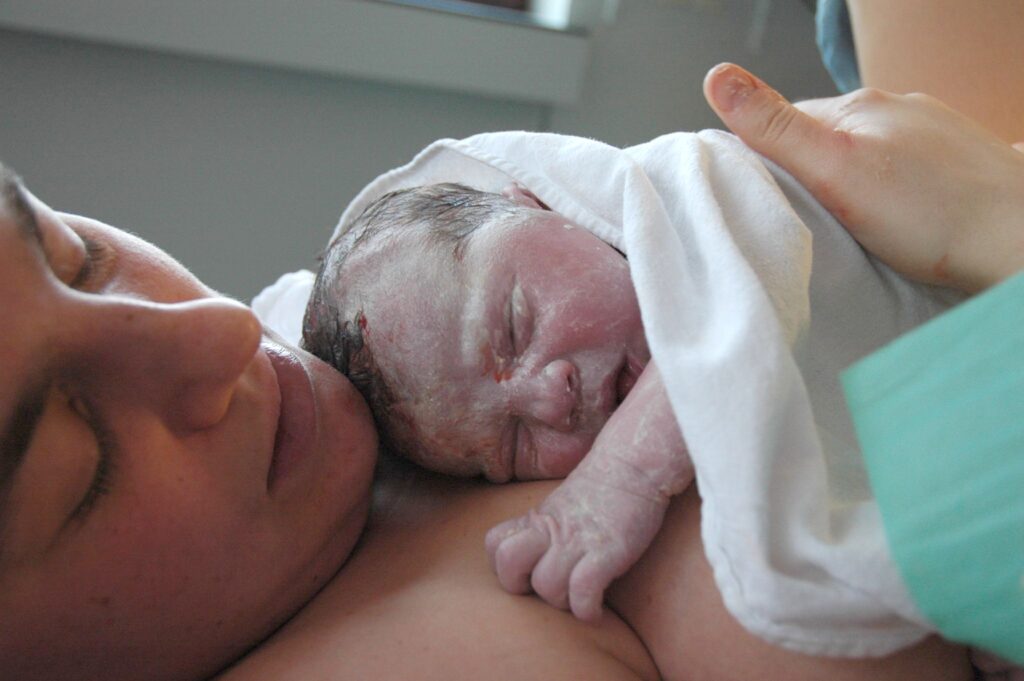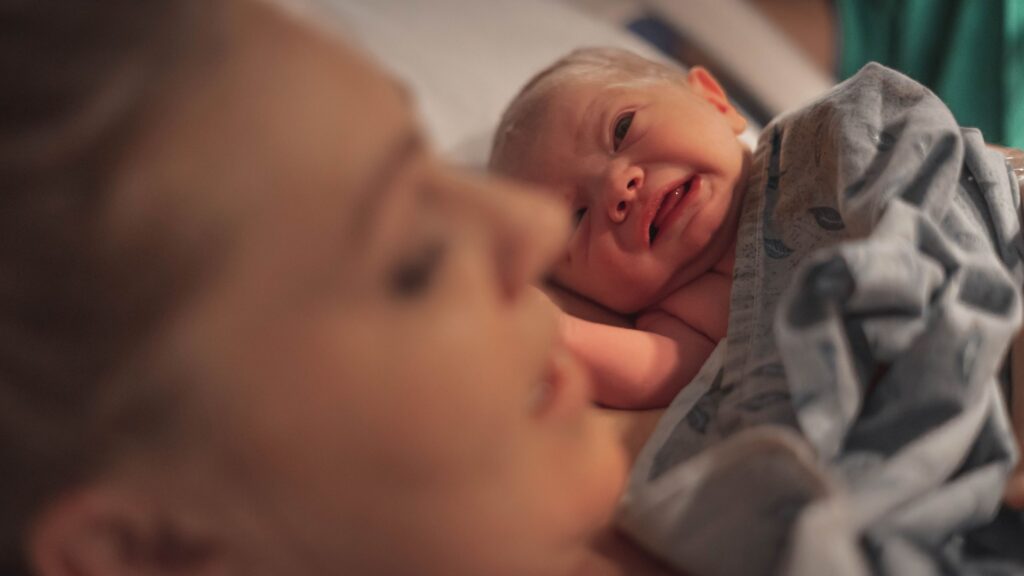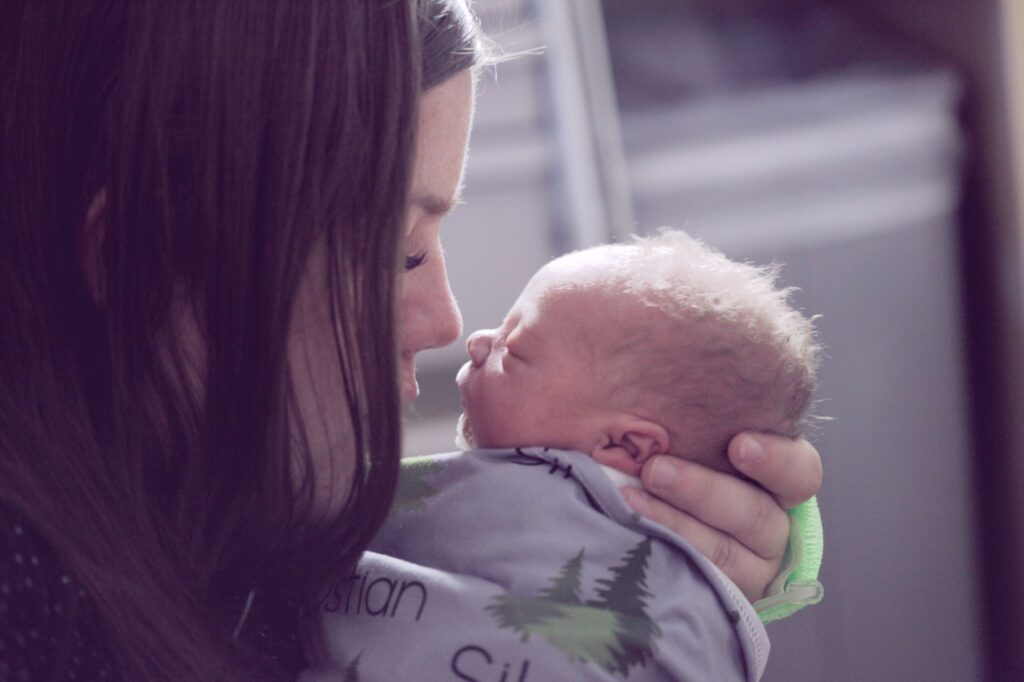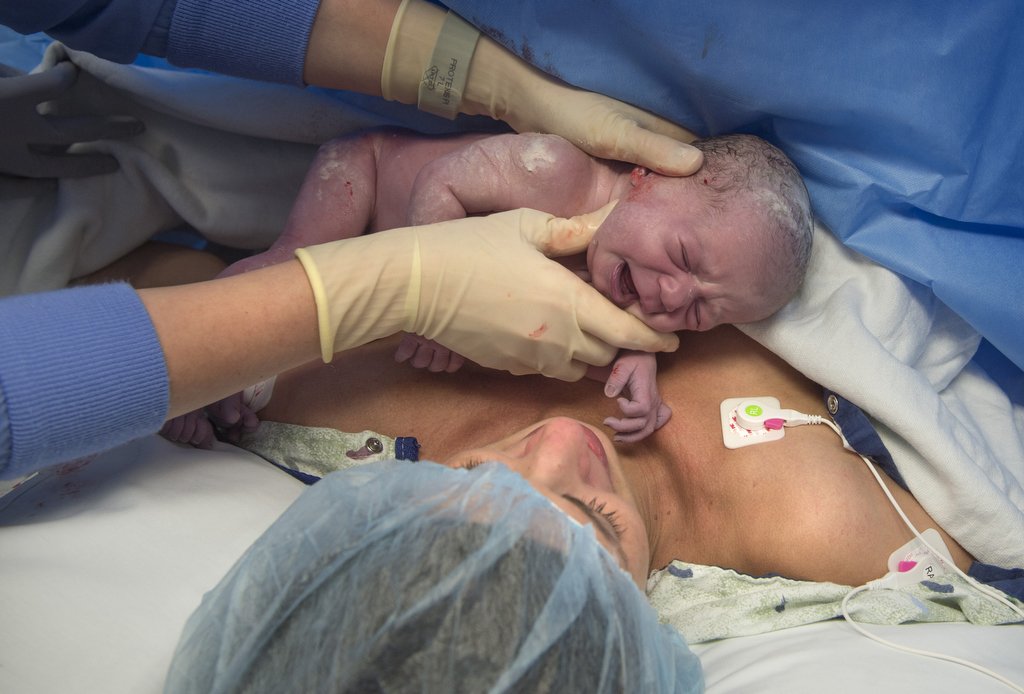
The Golden Hour has multiple meanings in medicine, depending on the area of practice. In emergency medicine, the Golden Hour represents a set of standardized protocols done within 60 minutes of the onset of a critical event to improve outcomes (Sharma, Sharma, & Shastri, 2016). These protocols have saved lives and improved outcomes of life-threatening events.
In perinatal nursing, the Golden Hour has been modified to improve the outcome of the infant within the first 60 minutes after delivery. It incorporates best practices that promote mother-infant bonding and breastfeeding while preventing neonatal hypothermia and hypoglycemia (Sharma et al., 2016). Care providers should encourage that these practices are carried out safely. When permitted, the normal bonding and latching processes begin, and the infant transitions easily to extrauterine life (Neczypor & Holley, 2017). The mother and infant dyad establish the foundations of a healthy relationship that lasts a lifetime.
Image Credit: http://clipart-library.com/new_gallery/353-3534601_a-golden-hour-represented-with-warm-colors-circle.png
Benefits

Skin to skin (STS) contact is beneficial to the newborn and the mother from the beginning of the Golden Hour and throughout the postpartum period. During the Golden Hour, STS contact promotes a positive feedback loop that preserves and nourishes the infant through the preservation of the mother.
Photo Credit: Tom Andriaenssen https://commons.wikimedia.org/wiki/File:Postpartum_baby2.jpg#/media/File:Postpartum_baby2.jpg
In the infant, STS contact increases the quiet alert state, leading to breastfeeding, and establishing normo-regulatory functions that promote a smooth transition to extrauterine life (Neczypor & Holley, 2017). The infant is less reliant on generating its own body heat, due to heat transfer from the mother, which reduces metabolic demand, stabilizing glucose levels in the infant. In the mother, combined with early breastfeeding, STS promotes the secretion of oxytocin, which stimulates uterine contraction and involution, thereby reducing hemorrhage risk, and prolactin, which stimulates early lactogenesis (Neczypor & Holley, 2017).

When uninterrupted STS contact is done in the Golden Hour, the benefits continue during rooming-in and home recovery. It reduces autonomic activity and cortisol levels, increasing sleep patterns, and preventing postnatal separation stress in infants; additionally, it reduces maternal stress, anxiety, and risk for postpartum depression in the mother; dyads are shown to continue breastfeeding for up to four months after delivery, and have a better breastfeeding experience (Moore, Bergman, Anderson, & Medley, 2016; Elsevier, 2011).
Photo Credit: Jimmy Conover. https://unsplash.com/photos/RPvfP58kmrI

Nurses must be diligent by allowing every dyad uninterrupted STS contact during the Golden Hour to provide the best opportunity for bonding and breastfeeding while aiding the infant during this transitional phase. Despite the benefits, STS has contraindications which discussed below.
Photo Credit: Sarah McCutchen. https://unsplash.com/photos/ZTSiID1W7-o
Contraindications

The health and safety of the dyad will always be the first priority and there are circumstances under which STS contact should be delayed or suspended. For example, STS should be avoided when a mother has a communicable disease such as COVID-19 as long as it can be transmitted; it should be delayed when the mother has suffered extreme exhaustion due to prolonged labor, has an injury requiring extensive repair or is actively hemorrhaging, or if she has an altered level of consciousness from opioid analgesics (Centers for Disease Control and Prevention [CDC], 2020; Neczypor & Holley, 2017).
Image Credit: http://clipart-library.com/images/kc8kj7koi.png

Additionally, STS contact should be discontinued or delayed in infants experiencing neonatal respiratory distress, bradycardia, poor tone, apnea or low APGAR scores, as well as neonates that are severely premature or have congenital anomalies (Feldman-Winter & Goldsmith, 2016). Infants who received CPAP resuscitation should be monitored until stable before being given to the mother to avoid secondary collapse (Feldman-Winter & Goldsmith, 2016).
In any case, once the mother or infant is stable, STS contact should be initiated and encouraged throughout the postpartum stay.
Image Credit: http://clipart-library.com/images_k/hand-silhouette-png/hand-silhouette-png-24.png
Barriers

Nurses report common barriers for initiating STS contact right after delivery, including competing priorities, inadequate staffing, the use of monitoring equipment, habit of practice, lack of education, and maternal lack of interest (Koopman, Callaghan-Koru, Alaofin, Argani, & Farzin, 2016). Caesarean sections present unique barriers because space in the operating room suite is limited space and STS would require additional staff to monitor the infant as well as the mother (Koopman et al., 2016).
Mothers who deliver by Caesarean section are often denied early STS contact, which can be delayed for several hours, and as a result, they have lower breastfeeding rates at discharge despite having a longer hospital stay (Guala et al., 2017).
Image credit: http://clipart-library.com/clipart/1090526.htm
Interventions

Nurses should do APGARs and initial assessment while the infant is on the mother, then the dyad should be left to bond naturally but monitored regularly; newborn prophylaxis, such as Vitamin K and eye antibiotics can be given after one hour or delayed for up to four hours (Feldman-Winter & Goldsmith, 2016).
Photo Credit: Nathan Dumalo https://unsplash.com/photos/y86bQFE4pM8

Nurses can create a safe operating suite environment that promotes early STS contact with mothers delivering by Cesarean section; however, if unachievable, STS contact should be done at the earliest and safest opportunity in the PACU; alternatively, the infant can benefit from STS with the father in the PACU until the mother is stable enough to participate (Feldman-Winter & Goldsmith, 2016) (Neczypor & Holley, 2017).
Photo Credit: Chris Clark https://healthbeat.spectrumhealth.org/a-blessing-i-didnt-expect/
Enjoy this mom’s perspective on her experience in the OR: Advocating to STS after Cesarean section